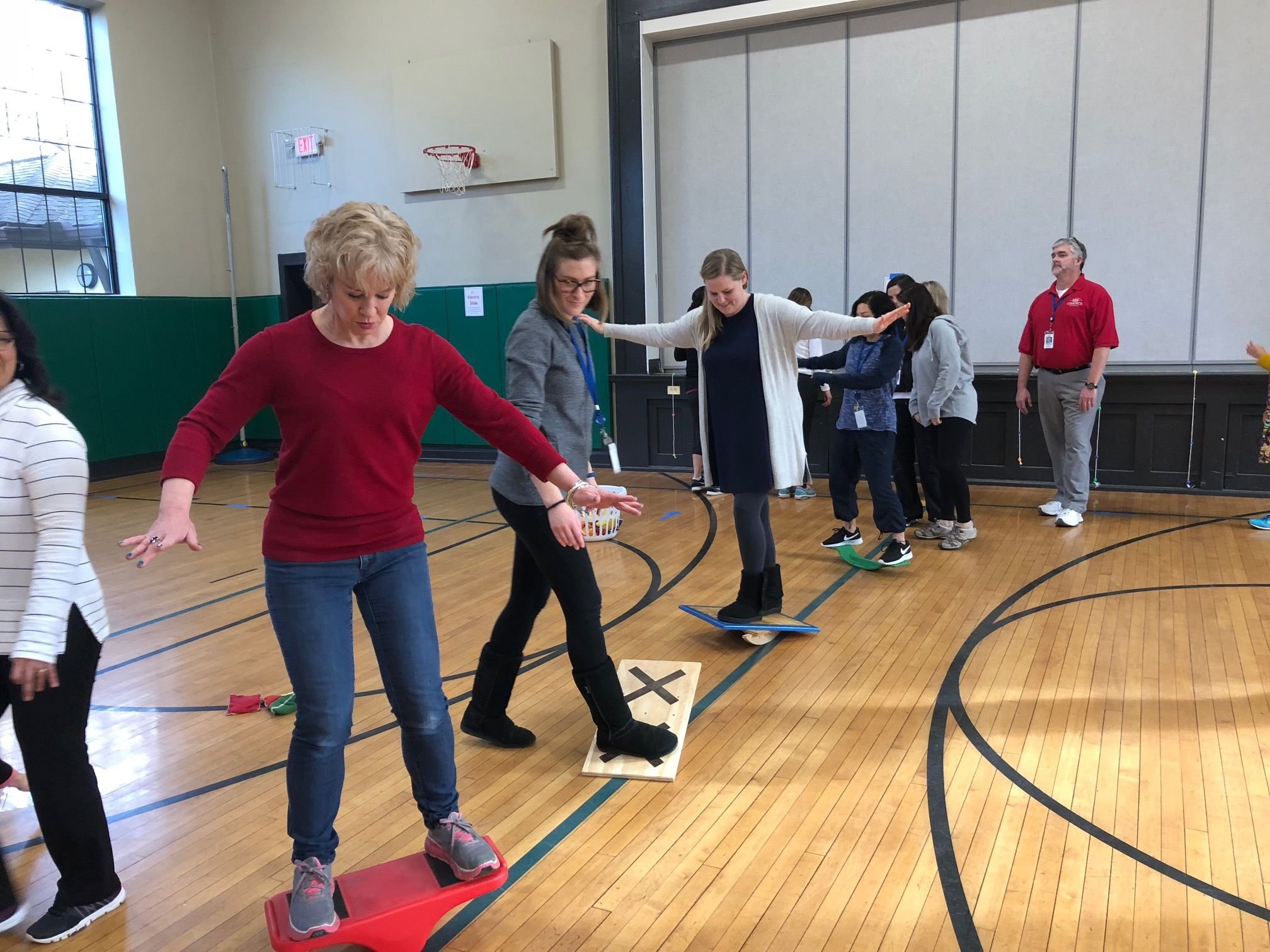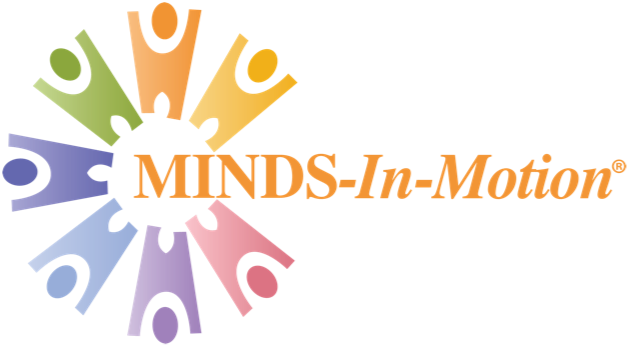
Frequently Asked Questions
General Questions
How do we know that Minds-In-Motion actually works?
What makes Minds-In-Motion different from other motion-based programs?
Given the results, why aren’t more schools implementing the program?
How do I set up Minds-In-Motion training sessions for my school?
How do we know that Minds-In-Motion actually works?
Twenty years and 1,700 case studies of students show the academic and physiological changes that result from Minds-In-Motion. We have scientific proof that students who have participated in Minds-In-Motion outperform other children. Our research has also been validated by the University of Louisville and Eastern Kentucky University and published in the Journal of Motor Learning and Development, the Journal of Physical Activity and Health, and in Great Britain’s Journal of Early Child Development and Care.
Comparative, clinical data shows that when students of any age, race, or socioeconomic level, have opportunities to build strong neurological foundations by activating sensory-motor integration processes, they become positioned to learn with ease and success, and are able to reach a higher potential.
You can find our data here.
What makes Minds-In-Motion different from other motion-based programs?
Minds-In-Motion is not a theory– it’s years of actual scientific data that has been validated and proven. We have research and science behind us to show that you can make physiological changes in children in a short time which will translate into higher functioning schools with higher functioning students. Our protocols were founded on physiology and reviewed clinically, but applied with the practical wisdom of a teacher who created the system to work in schools, homes and centers.
Given the results, why aren’t more schools implementing the program?
More schools should! A large barrier is that because this isn’t taught in most education courses, teachers and administrators are not exposed to the impact these protocols can have on students and their schools. It runs against the grain of what they have been taught about or think about learning. It is not until they see the changes in their own schools that they become believers.
How do I set up Minds-In-Motion training sessions for my school?
You can fill out the form here to set up a call to inquire about any questions you may have and to find a time that works for your school.
Can the effects of Minds-In-Motion “wear off”?
Video: Should Mind Maze be done at a certain time of day?
What we have consistently seen is that the more the child receives vestibular stimulation the higher integrated they become causing them to spiral upward. They might level off or regress slightly if they become “couch potatoes” again, but will never go back to where they were. The key is to continue movement!
What was your motivation for creating Minds-In-Motion?
My goal is that all children reach their full potential. We are short-selling children and don’t even realize it by labeling them, putting them in niches when we can be helping them achieve the potential they were born with. Look at all of the diagnoses that we’ve seen double, triple, quadruple in the last 20 years. Many of those disappear in children who do Minds-In-Motion and they are much happier and functioning at much higher levels. The children are my motivation.
For Schools
Video: What if a child struggles?
How do I set up Minds-In-Motion training sessions for my school?
What time-frame is needed for the in-school training?
What logistics do I need to know about the training?
What is the cost for the MiM onsite training?
What if my school doesn’t want to do a training day but I’d like to do this on my own?
How do I set up Minds-In-Motion training sessions for my school?
You can book a call here to get your questions answered and find a time that works for your school.
What time-frame is needed for the in-school training?
We offer both a one-day (6 hour) and a two-day (12 hour) training. The one-day training provides an overview of the scientific data behind Minds-In-Motion, examples and an introduction to the Maze. The second day is more intensive training in the Maze, assessment measures/ data-keeping and more individualized examples. If only one day can be arranged for a large group, then we strongly encourage sending at least one or two key staff to the comprehensive 2 day training when provided at regional sites.
What logistics do I need to know about the training?
We suggest hosting the training in a large conference room with a large screen or a blank wall and a lapel mic (if the room is large). We will send an email of “handouts” you can print or share with participants prior to the session.
What is the cost for the MiM onsite training?
It is $3,000 for one day or $5,000 for two days of comprehensive training. (Mileage + overnight accommodations , if needed, would be added to the final bill.)
What if my school doesn’t want to do a training day but I’d like to do this on my own?
It’s possible to set up a Minds-In-Motion MAZE inside your classroom and to do the MIM protocols as part of your daily routine. We have books that can help you get started.
My child is an excellent student so is there any reason to do Minds-In-Motion?
One of the wonderful things about Minds-In-Motion is that it meets students where they are and takes them beyond what you ever thought possible. We’ve seen Minds-In-Motion take highly functioning children to a much higher level and low functioning children to a high for them. It can change any child’s life no matter how old, and it can increase any child’s abilities, no matter how smart they already are! Plus because it affects not just learning but also social/emotional skills and athleticism. There are multiple benefits.
How soon should we notice a difference in our child after starting Minds-In-Motion?
With consistent use of the Mind-In-Motion protocols (even in as little as 5-8 minutes a day) you should see results within a few weeks. In some students we’ve seen results as soon as one session. The key is consistency.
Is my preschooler too young to benefit from Minds-In-Motion?
Video: Are preschoolers too young?
Absolutely not! Our clinical research documents the connection between how the eyes are focusing (visual processing); how the ears are functioning (auditory processing) and the functionality of the inner ear (vestibular system). It is incredible to see the difference a motor movement program centered around stimulating the vestibular system can affect the learning potential of EVERY child in a pre-school!
In fact, we have preschools that are regularly incorporating Minds-In-Motion into their school day.
Minds-In-Motion uses "directed" movement because what we know from experience is that many children...
Do not move in the necessary planes to stimulate all canals of the inner ear,
Do not get sufficient muscle tonality built up because they are not moving with enough frequency, duration and intensity,
Are not getting enough movement at home or getting outside in 360 degree "space and time" to properly develop their neural pathways.
By the age of 2 your child could start on our Therapeutic Listening Program at home.
Before that, we highly encourage you to spin your child, turn him upside down and swing him, and in general playing with him at a young age to stimulate his vestibular system.
We also recommend that you Do NOT let him start looking at computers, iPads, Smart phones, or even TV at this young age....this develops the brain and the eyes 2 dimensionally, rather than 3 dimensionally.

Have any further questions?
Feel free to contact us via the form below.

